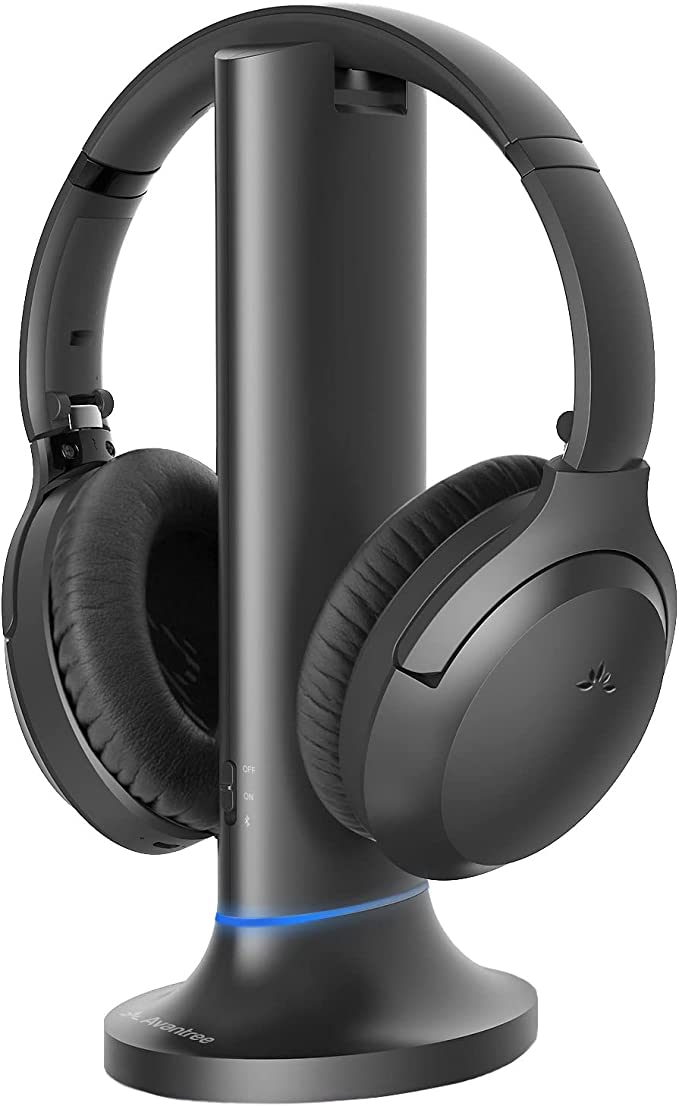Denon DHT-S517 Sound Bar: Immersive Dolby Atmos Sound for Your Home Theater
Update on March 15, 2025, 6:43 a.m.
For decades, home audio was largely confined to two dimensions: left and right. Stereo sound, while a significant advancement over mono, could only create a soundstage in front of the listener. Then came surround sound, adding rear channels to envelop the listener in a more immersive experience. But even surround sound remained fundamentally flat, limited to a horizontal plane. Dolby Atmos changed everything. It’s not just about more speakers; it’s about a fundamental shift in how sound is created and delivered, adding a crucial third dimension: height.

The Science of Sound: How Dolby Atmos Works
To understand Dolby Atmos, we need to move beyond the traditional concept of “channels.” While channels still exist (the DHT-S517 is a 3.1.2 system, meaning three front channels, one subwoofer channel, and two height channels), Atmos introduces the concept of “sound objects.”
Think of a traditional 5.1 surround sound mix. A helicopter flying across the screen would be mixed by panning the sound across the front left, center, and right speakers, and perhaps কিছুটা into the rear speakers. The sound is tied to those specific speakers.
With Dolby Atmos, the helicopter is a sound object. It’s not assigned to a specific channel. Instead, it’s given coordinates in a three-dimensional space. The Atmos processor (in this case, within the Denon DHT-S517) then uses the available speakers – including those height channels – to render that sound object in real-time, creating the illusion that the helicopter is flying overhead.
This is achieved through a combination of factors:
- Height Channels: These are typically upward-firing speakers that bounce sound off the ceiling, creating the perception of sound coming from above. The DHT-S517 has two dedicated up-firing drivers for this purpose.
- Metadata: Dolby Atmos soundtracks contain metadata – extra information that describes the location, size, and movement of each sound object. This metadata tells the processor where to place the sound in the 3D space.
- Sophisticated Algorithms: The Atmos processor uses complex algorithms to determine how to best utilize the available speakers to create the most realistic and immersive soundfield possible. It takes into account the speaker configuration, room acoustics (to a limited extent, without dedicated room calibration), and the metadata to render the sound objects accurately.
Denon DHT-S517: Your Gateway to Atmos Immersion
The Denon DHT-S517 Sound Bar is specifically designed to bring the Dolby Atmos experience into your home without the complexity and expense of a full-blown multi-speaker system. It’s a sleek, self-contained unit that houses all the necessary speakers and processing power to deliver a convincing 3D audio experience.
Inside the Soundbar: A Look at the Hardware
The DHT-S517’s 3.1.2 channel configuration is key to its performance. Let’s break it down:
- Left and Right Channels: These channels handle the majority of the soundtrack, including music, sound effects, and some dialogue. Each channel features a combination of a 1-inch tweeter (for high frequencies) and a 4.7” x 1.6” midrange driver (for mid-range frequencies). This combination ensures a wide frequency response and accurate sound reproduction.
- Center Channel: This dedicated channel is crucial for clear dialogue. It ensures that voices are anchored to the screen and are easily intelligible, even during loud action sequences. The DHT-S517 features a 1-inch driver specifically for this purpose.
- Height Channels: These are the stars of the Dolby Atmos show. The DHT-S517 incorporates two upward-firing speakers that project sound towards the ceiling. This sound reflects off the ceiling and back down to the listener, creating the illusion of overhead audio.
- Wireless Subwoofer: The sixth component.
Beyond Height: The Magic of Sound Objects
The real power of Dolby Atmos lies in its ability to handle sound objects. Imagine a scene in a rainforest. With traditional surround sound, you might hear birds chirping from the rear speakers. With Atmos, those birds become individual sound objects. One bird might chirp from above and to the left, while another flits across the room from right to left. The sound isn’t tied to a specific speaker; it moves realistically through the 3D space.
This creates a much more immersive and believable soundfield. It’s not just about hearing sounds from different directions; it’s about hearing sounds precisely where they should be in relation to the on-screen action. This level of precision adds a new layer of realism to movies, games, and even music.

eARC: The Unsung Hero of High-Resolution Audio
The Denon DHT-S517 features HDMI eARC (enhanced Audio Return Channel). This is a crucial feature for getting the most out of Dolby Atmos. Here’s why:
Traditional ARC (Audio Return Channel) allowed audio to be sent from your TV to your soundbar through the same HDMI cable that sends video to your TV. This was convenient, but ARC had limitations. It couldn’t handle the bandwidth required for high-resolution audio formats like Dolby TrueHD and Dolby Atmos, often compressing the audio signal.
eARC, on the other hand, is a significant upgrade. It has a much higher bandwidth, allowing it to transmit uncompressed, high-resolution audio, including Dolby TrueHD, Dolby Atmos, and DTS:X. This means you’re getting the full, lossless audio signal from your source (like a Blu-ray player or streaming device) to your soundbar, ensuring the best possible sound quality.
Think of it like this: ARC is like a narrow pipe, restricting the flow of audio data. eARC is like a wide-open highway, allowing all the audio information to flow freely, resulting in a richer, more detailed, and more immersive sound. To take advantage of eARC, both your TV and your soundbar need to be eARC-compatible.
Tailoring Your Sound: Exploring the DHT-S517’s Sound Modes
The Denon DHT-S517 offers a variety of sound modes to optimize the audio for different types of content:
- Movie Mode: This mode is designed to create a cinematic experience, enhancing the surround sound effect and providing a wider soundstage. It often boosts the bass and treble frequencies to create a more impactful sound. This is the mode you’ll want to use for watching movies and TV shows with Dolby Atmos soundtracks.
- Music Mode: This mode is optimized for music playback. It typically provides a more balanced sound signature, with less emphasis on surround sound effects. It aims to reproduce the music as accurately as possible, preserving the original stereo imaging.
- Night Mode: This mode is designed for late-night viewing. It reduces the dynamic range of the audio, compressing the difference between the loudest and quietest sounds. This allows you to hear dialogue clearly without disturbing others with loud explosions or sound effects.
- Pure Mode: This mode bypasses all digital signal processing (DSP), delivering the audio signal as it was originally recorded, without any enhancements or alterations. This is ideal for audiophiles who want the most accurate and uncolored sound reproduction. It is a feature purists value.
These sound modes allow you to customize the audio to your preferences and the type of content you’re enjoying. They’re not just simple EQ presets; they often involve more complex DSP adjustments to optimize the sound for specific scenarios.
Crystal-Clear Voices: Dialogue Enhancement Explained
One of the most common complaints about modern TV audio is that dialogue can be difficult to hear, especially during action scenes or when there’s a lot of background noise. The Denon DHT-S517 addresses this issue with its Dialogue Enhancer feature.
This feature uses digital signal processing (DSP) to isolate and enhance the frequencies associated with human speech. It doesn’t simply boost the overall volume; it selectively increases the clarity of dialogue without affecting other sounds. The DHT-S517 offers three levels of dialogue enhancement (Low, Medium, High), allowing you to fine-tune the effect to your liking.
The underlying principle is based on psychoacoustics – the study of how humans perceive sound. By understanding which frequencies are most important for speech intelligibility, the Dialogue Enhancer can selectively boost those frequencies, making dialogue stand out from the background noise.
Wireless Freedom: The Subwoofer’s Role
The Denon DHT-S517 includes a wireless subwoofer, which is responsible for handling the low-frequency sounds (bass). This is crucial for creating a full and impactful sound, especially for movies and music.
The wireless connection eliminates the need for a cable between the soundbar and the subwoofer, giving you more flexibility in placing the subwoofer in your room. The subwoofer connects to the soundbar via a 2.4 GHz wireless signal, providing a stable and reliable connection.
The subwoofer’s role is to reproduce the deep bass frequencies that the smaller drivers in the soundbar can’t handle effectively. This adds weight and impact to explosions, music, and other low-frequency sounds, creating a more immersive and visceral experience. The crossover frequency (the frequency at which the soundbar hands off the low frequencies to the subwoofer) is typically set automatically, ensuring a seamless blend between the soundbar and the subwoofer.
Setting Up Your Soundstage: Placement and Connectivity
Getting the most out of your Denon DHT-S517 requires proper placement and connection.
- Soundbar Placement: Ideally, the soundbar should be placed directly below your TV, centered horizontally. If you’re wall-mounting the soundbar, use the included wall mount spacers and template to ensure proper spacing and alignment. Make sure the upward-firing speakers are not obstructed.
- Subwoofer Placement: The subwoofer can be placed anywhere in the room, but experimenting with different locations can help optimize the bass response. Corner placement often enhances the bass, but it can also make it sound boomy. Try placing it along a wall, a few feet away from the corner, for a more balanced sound.
- Connections: The simplest and best connection is via HDMI eARC (or ARC if your TV doesn’t support eARC). Connect an HDMI cable from the HDMI eARC/ARC port on your TV to the HDMI port labeled “TV (HDMI eARC/ARC)” on the soundbar. You can also connect other devices (like a Blu-ray player) directly to the soundbar’s HDMI input. If your TV doesn’t have HDMI ARC, you can use the optical digital input. The AUX input allows for analog connections.

The Sound of the Future: Dolby Atmos and Beyond
Dolby Atmos represents a significant step forward in home audio technology. It’s not just a gimmick; it’s a fundamentally different way of experiencing sound. And as more and more content is created in Dolby Atmos, the benefits of having an Atmos-capable sound system will only become more apparent.
The Denon DHT-S517 provides an accessible and affordable entry point into the world of Dolby Atmos. It’s a testament to how far soundbar technology has come, delivering a level of immersion that was once only possible with much more complex and expensive systems. While traditional multi-speaker setups still have their place, soundbars like the DHT-S517 are proving that you don’t need a room full of speakers to enjoy truly cinematic sound. The future of home audio is about creating more immersive and realistic experiences, and Dolby Atmos, delivered through capable systems like the Denon DHT-S517, is leading the way.



























































